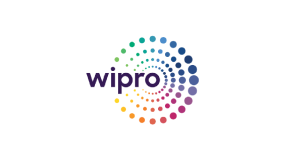Your users blame the application whenever it slows down or stops responding, and they rarely consider the role of weak signals, carrier variations, or congested networks, even though these factors have a direct impact on performance.
In reality, network conditions shift constantly as devices move between Wi-Fi and mobile data, signals weaken in crowded locations, and many connections run on slower or inconsistent plans. These fluctuations shape how data is delivered and how each screen responds, and they often expose issues that controlled tests never surface.
This is where network testing in real user scenarios becomes critical. It builds a more accurate picture of how the application behaves under the same shifting conditions that users encounter.
In this blog post, we look at how network testing brings these hidden issues to light early in the process and helps teams address them before they turn into noticeable problems for users.
The Technical Realities That Make Network Testing Critical for Performance
- You cannot Test Every Carrier Manually: As your user base grows, it spans dozens of mobile carriers, and each carrier handles data, voice, and identity services differently. Testing manually on every carrier is impossible as you'd need devices, SIM cards, and accounts for AT&T, Verizon, T-Mobile, Sprint, and dozens more providers, then repeat tests across all of them whenever you release an update.
For example, your banking app might load in 2 seconds for Verizon users but take 4 seconds for T-Mobile users in the same city. Without testing on T-Mobile, you never discover this until users complain or delete your app.
- You cannot Replicate Real User Locations: A user's physical location dictates network quality, creating endless variations that your team cannot manually reproduce.You can't send your team to every rural area, highway, subway, or office building where your users actually are.
Each location has different signal strength, tower congestion, and network interference that changes how your app performs and it is impossible to setup test lab everywhere to recreate these exact conditions.
- You cannot Reliably Trigger Dynamic Scenarios: When a user is roaming, their network traffic is often routed back to their home carrier, resulting in significant latency that can cause your app to fail.
Similarly, a user steps outside, shifts from Wi-Fi to mobile data, and the app logs them out because the connection changed mid-action.
Without testing under these conditions, apps often fail to handle transitions, such as roaming or weak connectivity, resulting in broken sessions, slow responses, and frustrated users.
How Network Testing Translates to Measurable Performance Improvements
Network testing provides diagnostic reports and logs that explain why problems occur and how to fix them.
Testing for Multiple Carriers and Network Conditions
Testing on real devices with active SIM and eSIM profiles from different carriers helps teams see how the app’s data, voice, and identity flows behave under actual network paths. This includes checking how quickly APIs respond, how sessions hold during carrier changes, and whether call- or SMS-based flows slow down or fail for specific carriers.
A real device testing platform that supports SIM switching through the UI removes the manual effort of swapping physical cards and makes it easier to test multiple carriers in sequence. Teams can compare how calls are routed, how caller information appears, and how SMS and OTP delivery times differ across carriers to confirm that these variations do not affect the user’s experience in the app.
Testing in Multiple Locations Across the Globe
Application performance changes across regions, so testing on devices in located in different locations helps teams see how the app loads and responds for users worldwide.
Another efficient way to test across different locations is regional routing, which lets teams check how the app behaves when traffic comes from a specific region without needing a physical device there.
As teams run these tests, tracking network-specific KPIs like download speed, HTTPS throughput, and packet loss shows where delays occur and which regions need performance improvements.
Check for Dynamic Scenarios
When users move between Wi-Fi and mobile data or roam across carriers, their network parameters change instantly. These transitions can cause session drops, failed API calls, or delays in loading content.
Network testing tools help teams recreate these moments by simulating events like temporary network loss, airplane-mode recovery, roaming, and other connectivity shifts. They can also test reduced-quality conditions such as lower bandwidth, latency spikes, jitter, and mid-request disconnects to see how quickly the app recovers and whether core flows continue working under real performance pressure.
Closing the Loop Between Testing and Fixing
Unstable network conditions often leave teams guessing why performance issues occur. Network testing eliminates that uncertainty by recreating scenarios, capturing detailed network performance metrics, and turning unpredictable issues into measurable, fixable ones.
With HeadSpin, teams can test on real devices in 60+ locations across the globe, replicate diverse connectivity scenarios across multiple carriers, and capture all network performance metrics in time-series dashboards. This helps QA teams evaluate mobile app performance under real network conditions and ensure key flows stay stable, responsive, and consistent for users in every region.
Test Real Network Conditions Before Users Notice Issues! Connect With HeadSpin Experts.
FAQs
Q1. What kind of issues can network testing uncover?
Ans: It can expose problems such as slow loading times on specific carriers, crashes during Wi-Fi-to-mobile data transitions, and large file downloads that fail on weak connections.
Q2. How is network simulation different from using emulators?
Ans: Emulators can mimic basic device behavior but cannot replicate real network conditions, such as latency, packet loss, or bandwidth limitations. Testing on real devices connected to actual carrier networks delivers more accurate results, reflecting how the app performs on users’ devices in real environments.



























.png)


















-1280X720-Final-2.jpg)






